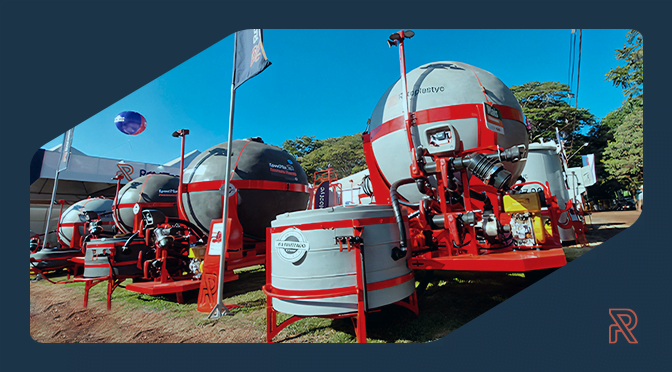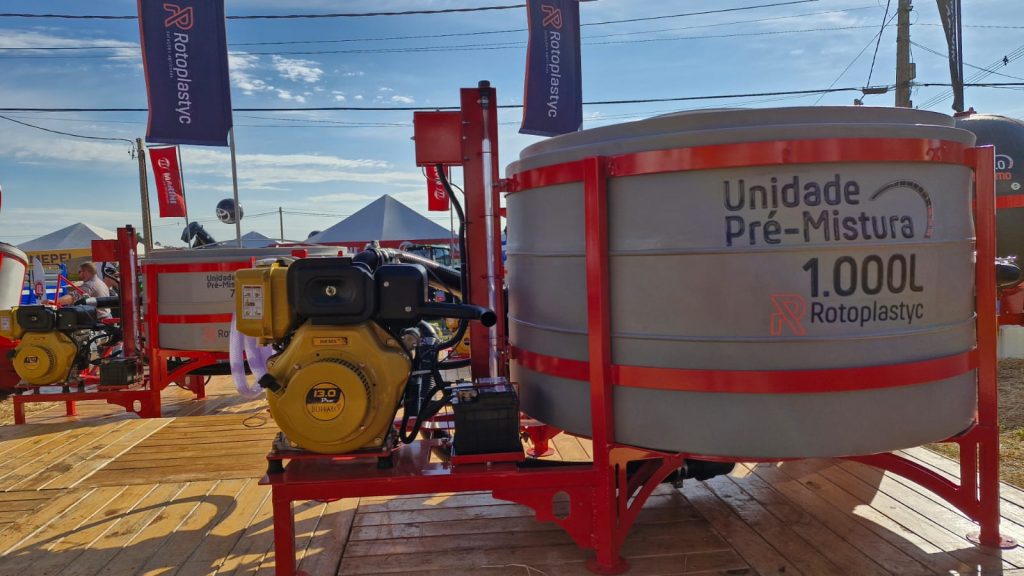Rainy Season and Agribusiness: Essential Spraying Practices for Summer
High temperatures and frequent rainfall make summer a particularly challenging time for agribusiness. Excess moisture, intense heat, and unpredictable conditions demand extra care in crop management.
Among the most critical tasks during this period is spraying — a process that, when planned and executed correctly, can significantly improve crop health and productivity.
In this article, we’ll cover the main climate-related threats, the best practices for summer spraying, and how our Rotoplastyc solutions can help optimize field operations.
Let’s dive in!
How Summer Weather Affects Crops
The combination of heat and heavy rainfall can cause serious issues in the field, such as:
-
Irregular Germination
Excess water disrupts uniform seed growth, compromising plant development from the start. -
Increased Disease Pressure
High humidity creates ideal conditions for fungi and other pathogens, leading to potential crop losses. -
Soil Compaction
Machinery moving over wet soil compresses the ground, reducing water infiltration and root growth. -
Delayed Harvest
Unfavorable weather can slow down fieldwork and impact productivity due to postponed harvesting operations.
Spraying: A Key Ally in Crop Protection
Despite the hurdles, spraying in summer is one of the most effective ways to protect crops and mitigate climate impact.
When guided by strategy and precision, spraying helps:
-
Prevent disease outbreaks
-
Control pests
-
Support vigorous crop growth
Smart Spraying Practices for the Rainy Season
To ensure spraying success in hot and wet conditions, adopt these essential practices:
-
Assess the Real Need
Evaluate pest and disease pressure before spraying to avoid unnecessary applications and optimize product use. -
Calibrate Equipment
Regularly check nozzles, hoses, and filters to ensure the system is functioning properly and delivering accurate doses. -
Preserve Soil Health
Techniques like no-till farming and cover crops reduce compaction and promote water absorption. -
Apply Preventive Treatments
Preventive fungicide use is crucial in humid conditions to reduce the risk of disease spread. -
Plan Spraying Windows
Monitor weather forecasts and choose periods with lower wind and milder temperatures for more effective applications.
Optimize Your Spray Mix with the Right Equipment
Efficiency begins with a well-prepared tank mix. Using equipment that blends the mixture before spraying improves:
-
Homogeneity of the solution
-
Application quality
-
Equipment lifespan (by preventing nozzle clogging)
🌱 Discover the Advantages of the Rotoplastyc Speed Line
At Rotoplastyc, we offer advanced equipment designed to support the realities of the field. Our Speed Line helps rural producers prepare and apply crop protection products more effectively.
Benefits of the Speed Line:
-
Water Efficiency
Secure, efficient storage for spray liquids simplifies field refills. -
High Durability
Built from tough materials to withstand harsh outdoor conditions. -
Easy to Use
Designed for everyday farm operations — quick to install and operate. -
Maximum Mixing Performance
Dual internal agitators ensure full incorporation of liquids or powders, resulting in consistent and high-quality spray mixes. -
Time-Saving
Rapid transfer of the mix to the sprayer cuts downtime and boosts productivity. -
Hygienic Design
Smooth interior walls are easy to clean and prevent cross-contamination between applications.
Turn Challenges into Results
Summer’s climate may be tough — but with proper planning, modern techniques, and reliable tools, you can protect your crops and secure your yields.
Visit our website to explore all our agribusiness solutions and take your spraying operations to the next level.



